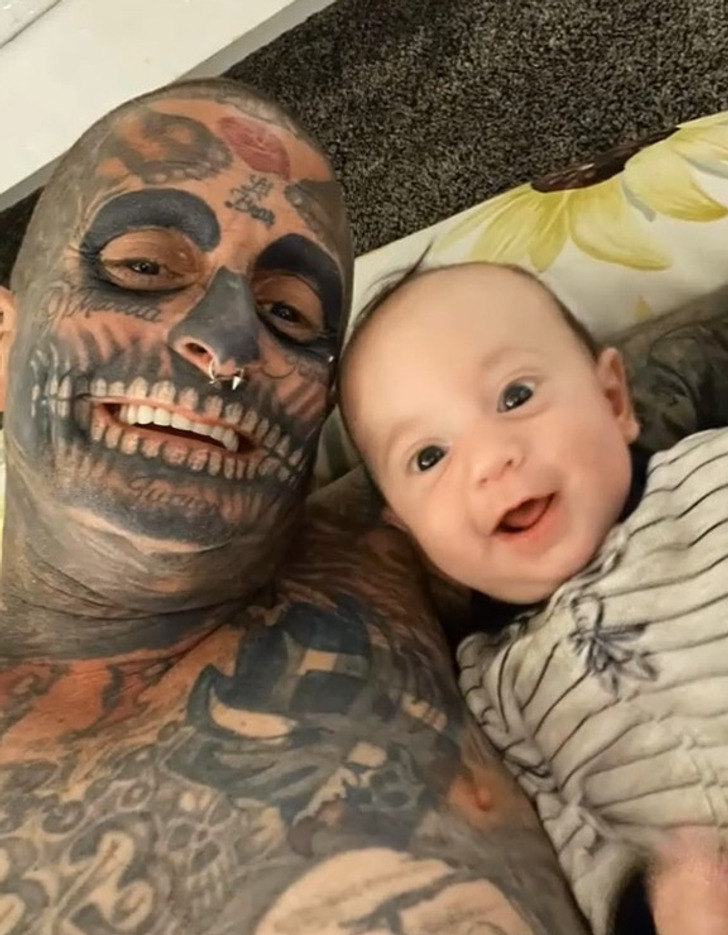We at Bored Panda have seen a fair share of bad tattoos. So every once in a while, it’s a good idea to remind ourselves that you can find nice ones, too. Enter ‘The Best Tattoo Page,’ an Instagram account acting as an online gallery that showcases what it considers the top of the top. From intricate black-and-gray portraits to vibrant, colorful sleeves, it features an impressive variety of styles by talented artists worldwide.

Tattoos have become a more common sight than it used to be. In the US, for example, 32% of adults (38% of women and 27% of men) have at least one, compared to 30% in 2019 and 21% in 2012. Interestingly, political affiliations or whether a person lives in an urban, suburban, or rural community don’t seem to make a difference in their decision to get one.
What does is the desire to honor or remember someone or something: 69% of tattooed adults say this is either a major or minor reason they got any of their tattoos. Just under half (47%) say they got a tattoo to make a statement about their beliefs, and 32% say they got at least one to improve their personal appearance.

Among Americans who don’t have tattoos themselves, about three-in-ten (29%) say that seeing ink on someone’s skin gives them a more negative than positive impression of that person. Just 5% say tattoos leave a more positive than negative impression. But the largest share (66%) say seeing a tattoo on someone else leaves them with neither a positive nor negative impression of that person.

However, Americans overall – including those with and without tattoos – think society has become more accepting of tattooed people over the past 20 years or so. Eight-in-ten U.S. adults believe this to be true, while far fewer (7%) say society has become less accepting of tattooed people, and another 12% say societal acceptance of people with tattoos has pretty much stayed the same.
So what is a good tattoo? According to Matt Hunt, who has been an artist in the industry for more than two decades, the design should ideally have a balance between the large shapes and the finer details. “Japanese work is so good for this, the larger shape of the koi and water can be read from across a room but you get closer and you see all the detail on the scales,” he writes.

“There should also be a range of values from the lightest colours or greys (or even bare skin) through to the darkest,” Hunt adds. This is one of the most common mistakes he notices and also one that makes sleeves look like one big lump of dark or mid tones.
“Of course, one could argue that tiny tattoos might not fit this criteria, but you could also argue that really tiny tattoos are often not likely to age very well.”
The quality of lines can also make or break a design.

“On a perfect tattoo, lines should be smooth and of even thickness. In reality, tattooing is an imperfect medium and perfect lines are impossible as a tattoo ages, but a good design should account for this. Even so, less than perfect is not the same as crap,” Hunt says.
Coloring should also be solid. “Whatever color, it is should be smooth and saturated, and gradients between colors should be smooth, too,” the tattoo artist explains.
“Sometimes bad tattoos can have a choppy look to the color whereas good work has a smooth and even look. A good artist can get the color in easily without churning up the skin too much and scarring everything, a less experienced one may struggle and it shows in the final result.”

Also, it’s worth mentioning that in order to judge a piece accurately, you have to see it with your own eyes, not through a screen. “All tattoos look like tattoos in real life,” Hunt says. “They don’t look like pencil sketches on white bits of paper and they don’t have blacks so dark next to white highlights to make them look like they glow.”
“Some artists really push the limits on filtering their tattoo photos, bumping up contrast and unfortunately, sometimes even using blend tools to smooth things out, or overlaying reference images.”
At the end of the day, it’s all subjective. “A tattoo can be technically perfect but it isn’t what the customer wanted, or it can be a piece of blown out crap that they love,” Hunt says. And he himself is a good example of it. One of the favourite tattoos the artist has is technically awful, but it’s by a good friend of his (who isn’t even a tattooist) and the imperfection is precisely what makes it unique.









